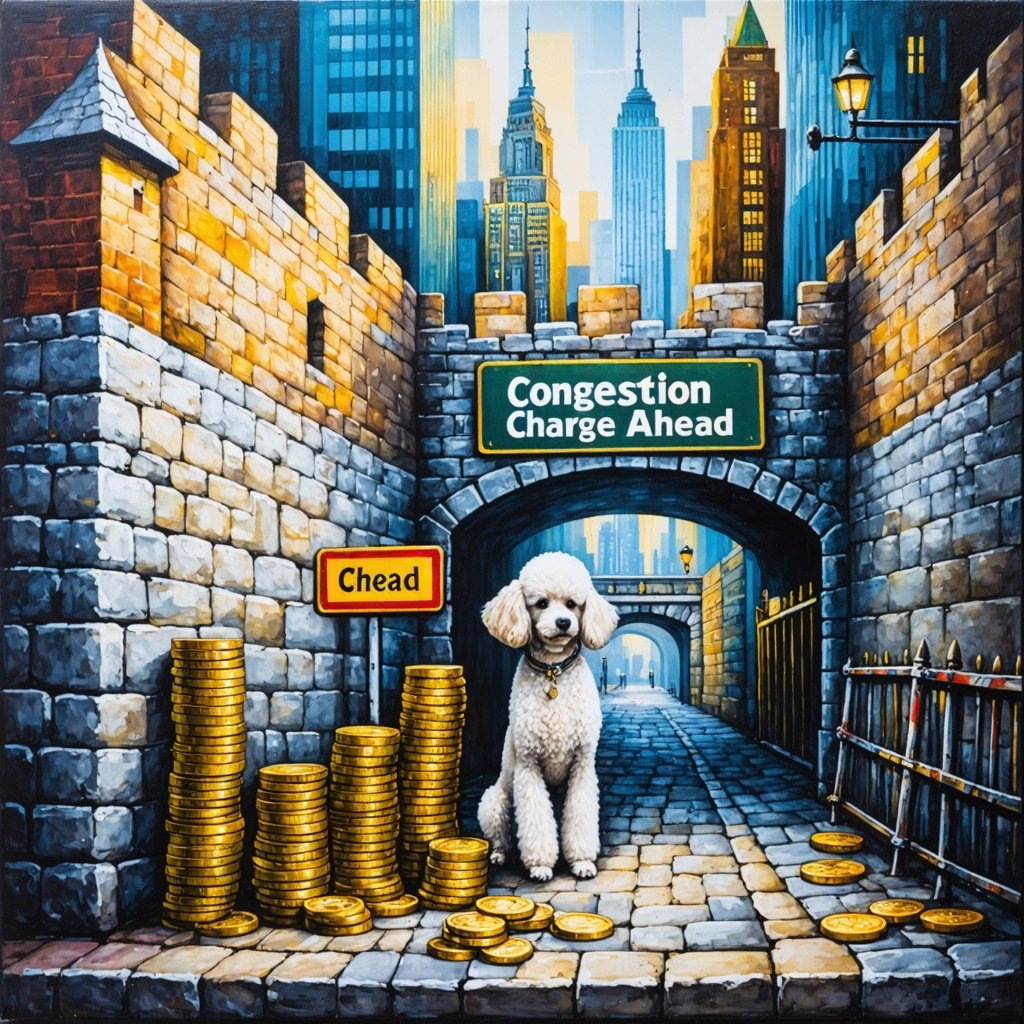FLOSSI: NEW YORK GOES MEDIEVAL
Walled cities in the medieval age frequently enacted tolls and taxes on people and goods entering and leaving the city. These measures were vital for the city's economy, defense, and governance. Below are some notable examples of medieval walled cities that imposed such charges:
London (England)Tolls and Taxes:
Medieval London levied tolls on merchants and traders bringing goods into the city.
Taxes were often collected at gates such as Ludgate and Aldgate.
The city’s walls, originally built by the Romans and expanded in the Middle Ages, controlled entry points and facilitated the collection of these fees.
Revenue funded city maintenance, including the repair of walls, roads, and public services.
Paris (France)
Tolls and Taxes:
Paris imposed octroi (entry taxes) on goods such as wine, food, and raw materials entering the city.
Taxes were collected at the city's fortified gates, including Porte Saint-Denis and Porte Saint-Martin.
The walls, such as the Wall of Philippe Auguste, were essential for controlling trade and ensuring efficient tax collection.
Octroi revenues supported city infrastructure, defense, and governance.
Paris (France)
Tolls and Taxes:
Paris imposed octroi (entry taxes) on goods such as wine, food, and raw materials entering the city.
Taxes were collected at the city's fortified gates, including Porte Saint-Denis and Porte Saint-Martin.
The walls, such as the Wall of Philippe Auguste, were essential for controlling trade and ensuring efficient tax collection.
Octroi revenues supported city infrastructure, defense, and governance.
Lübeck (Germany)
Tolls and Taxes:
A leading city in the Hanseatic League, Lübeck levied tolls on ships and goods entering its ports.
Entry taxes were also collected at the city gates for merchants using land routes.
Its prominent trade position made tolls a primary source of income for the city.
Funds were used to maintain fortifications, promote trade, and ensure the city’s autonomy within the Hanseatic League.
Bruges (Belgium)
Tolls and Taxes:
Bruges collected tolls at its gates and waterways, taxing goods brought in by merchants.
Specific goods like textiles and spices faced additional fees.
The city’s canals and gates made it a key trading hub during the Middle Ages.
Revenues were invested in the city’s infrastructure, including maintaining the canals and fortifications.
Carcassonne (France)
Tolls and Taxes:
As a fortified city, Carcassonne taxed traders and travelers entering through its gates.
Goods like salt and cloth were particularly targeted for taxation.
The double-walled fortifications of Carcassonne enabled tight control over trade and taxation.
Revenues supported the upkeep of the city’s walls and its military garrison.
Florence (Italy)
Tolls and Taxes:
Florence imposed tolls on goods entering its walls, especially during fairs and market days.
Wool and textiles, key industries in Florence, were heavily taxed.
The city’s gates, including the Porta Romana, controlled entry and ensured proper tax collection.
The revenues helped finance the city’s artistic and architectural projects, as well as its defense.








